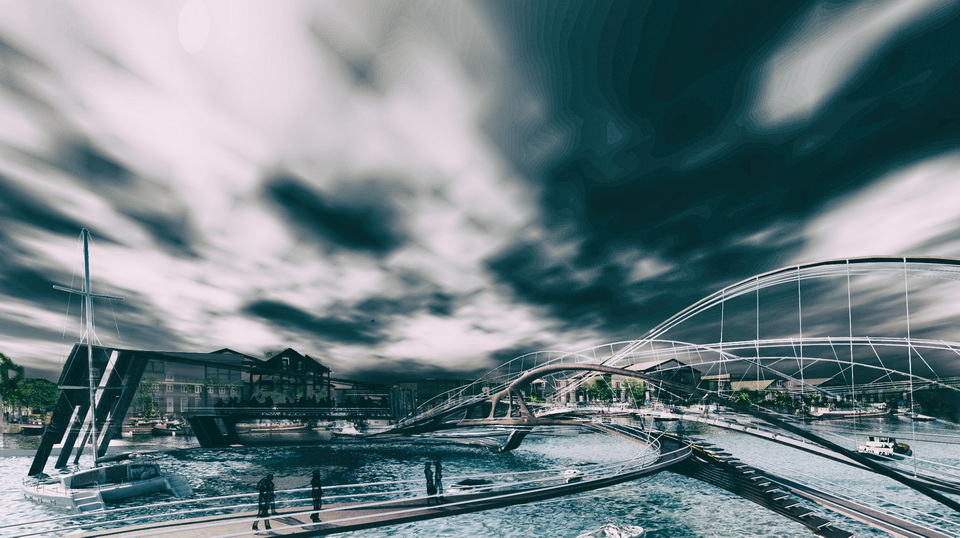‘This is what happens when the image becomes time-image…The screen itself is the cerebral membrane where immediate confrontations occur between the past and the future, the inside and the outside, at a distance impossible to determine, independent of any fixed point. The image no longer has space and movement as its primary characteristics but topology and time.’ (Deleuze)
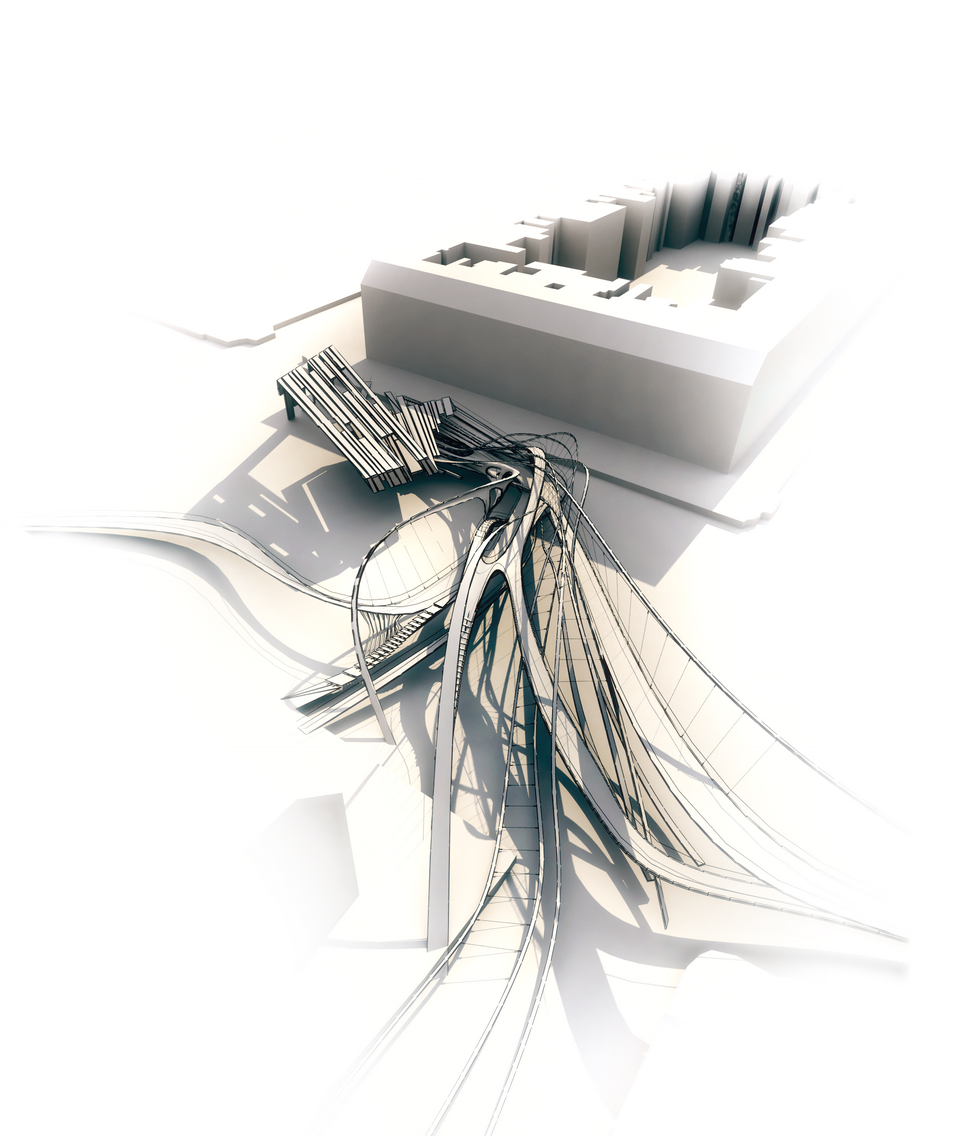
Introduction
The bridge is a structure built to span physical obstacles such as a body of water to provide passage over the obstacle. It is designed for pedestrians and cyclists rather than vehicular traffic. Footbridges complement the landscape and can be used decoratively to visually link two distinct areas or to signal a transaction. Footbridges can be both functional and beautiful works of art and sculpture in their own right as seen in some of the most visited countries around the world.
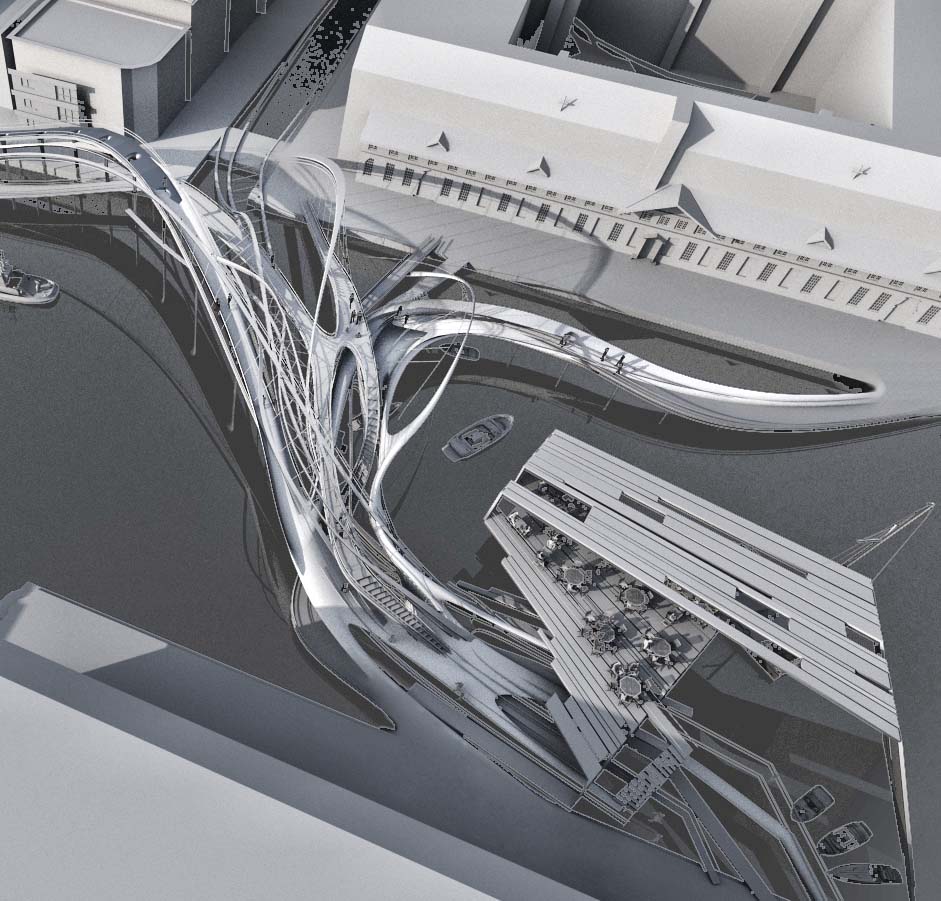
Overview
This international competition aims to design an Iconic Pedestrian Bridge in the Heart of Amsterdam. The architecture of this new structure should reflect contemporary design tendencies.
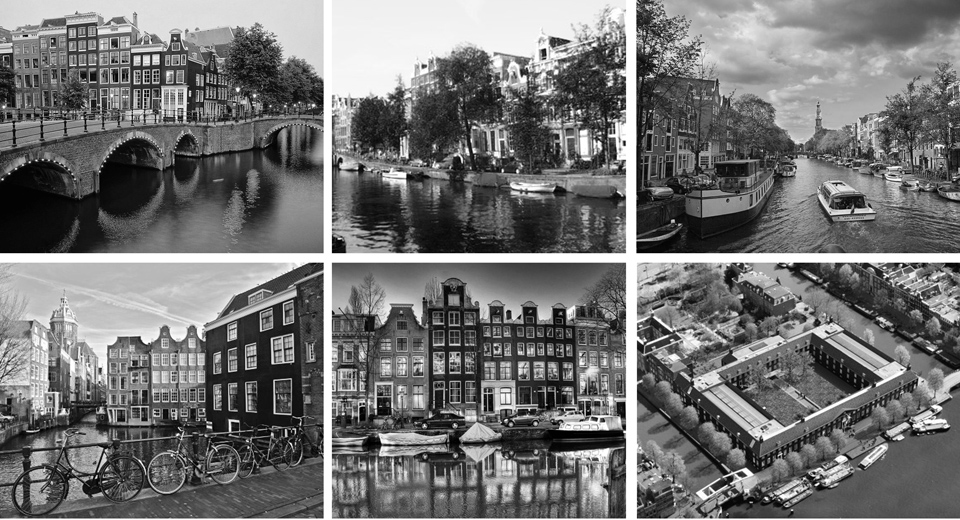
The proposal had to attend to the specific function, and the design should also consider the urban insertion and impact geared towards creating a new architectural symbol for an European capital city. This competition hopes to achieve the following:
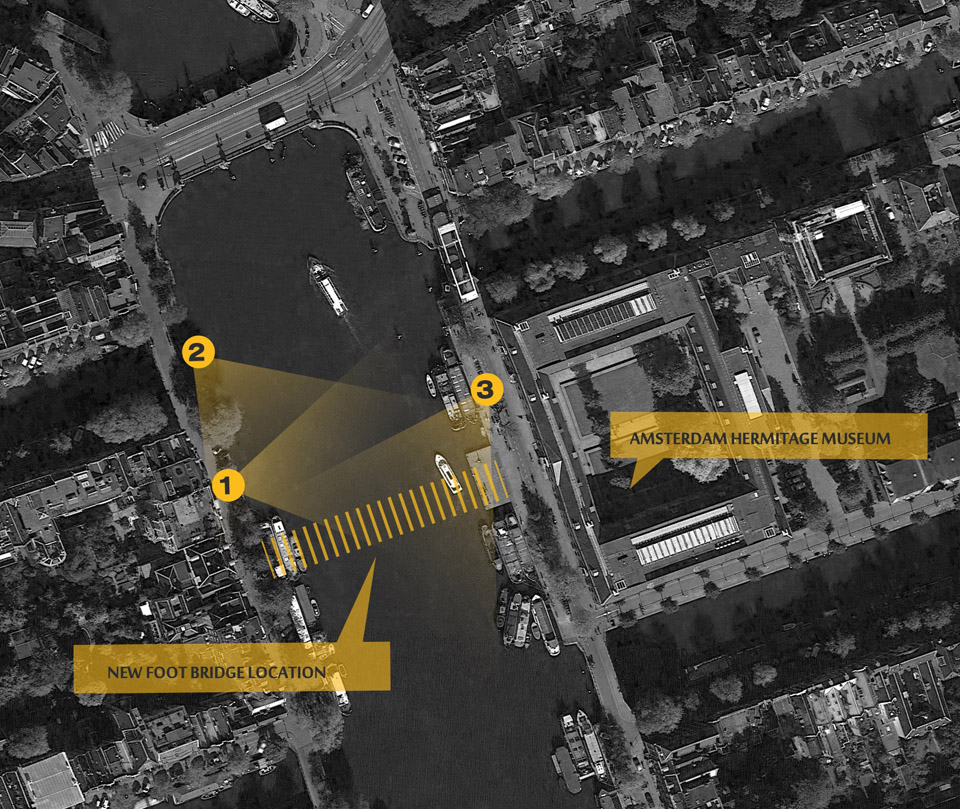
- Encourage and reward design excellence between architecture and engineering.
- Research, respond to and highlight the unique aspects of designing an original footbridge.
- To generate ideas regarding the functionality of bridges in relation to art and sculpture.
- Encourage the employment of sustainable design in all aspects of the proposal.
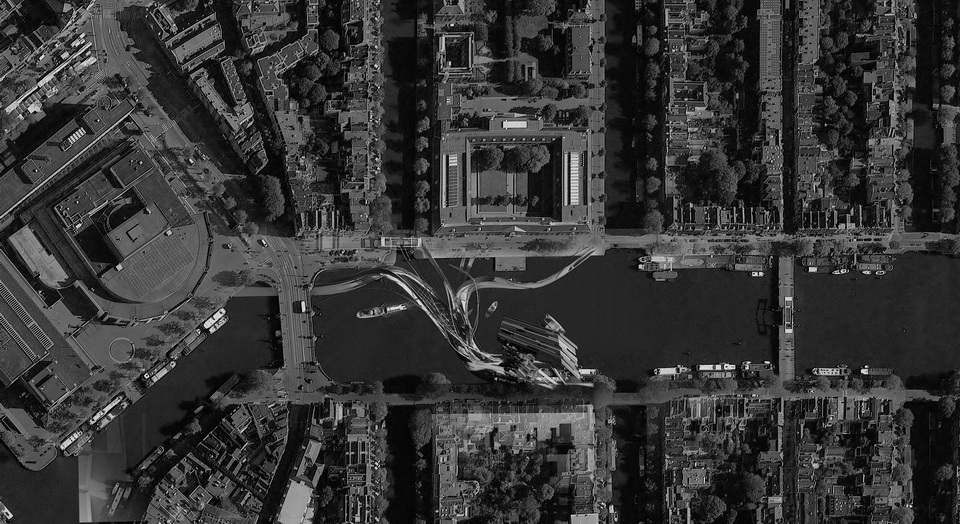
The new Pedestrian Bridge will be located on Amstel 51 in the front of the Hermitage Amsterdam Museum on the east bank of the Amstel river. The Museum is a classical style building dating from 1681 and is currently the largest dependency of the Hermitage Museum with a total area of around 13,000 square meters. The new 90m footbridge will serve existing communities, visitor, ande neighborhoodt. The structure will form a new gateway to the Hermitage Amsterdam Museum and will create direct access from the East bank of the Amstel canal.
Design Rquests:
The existing barge for boats on the front of each side of the river bank is omitted indicating that the site is clear. The following spaces should be included in the design program: Pedestrian bridge: a 90m long by 4m wide minimum footbridge connecting the east to west bank of the Amstel river on the axis of the Hermitage Amsterdam Museum.
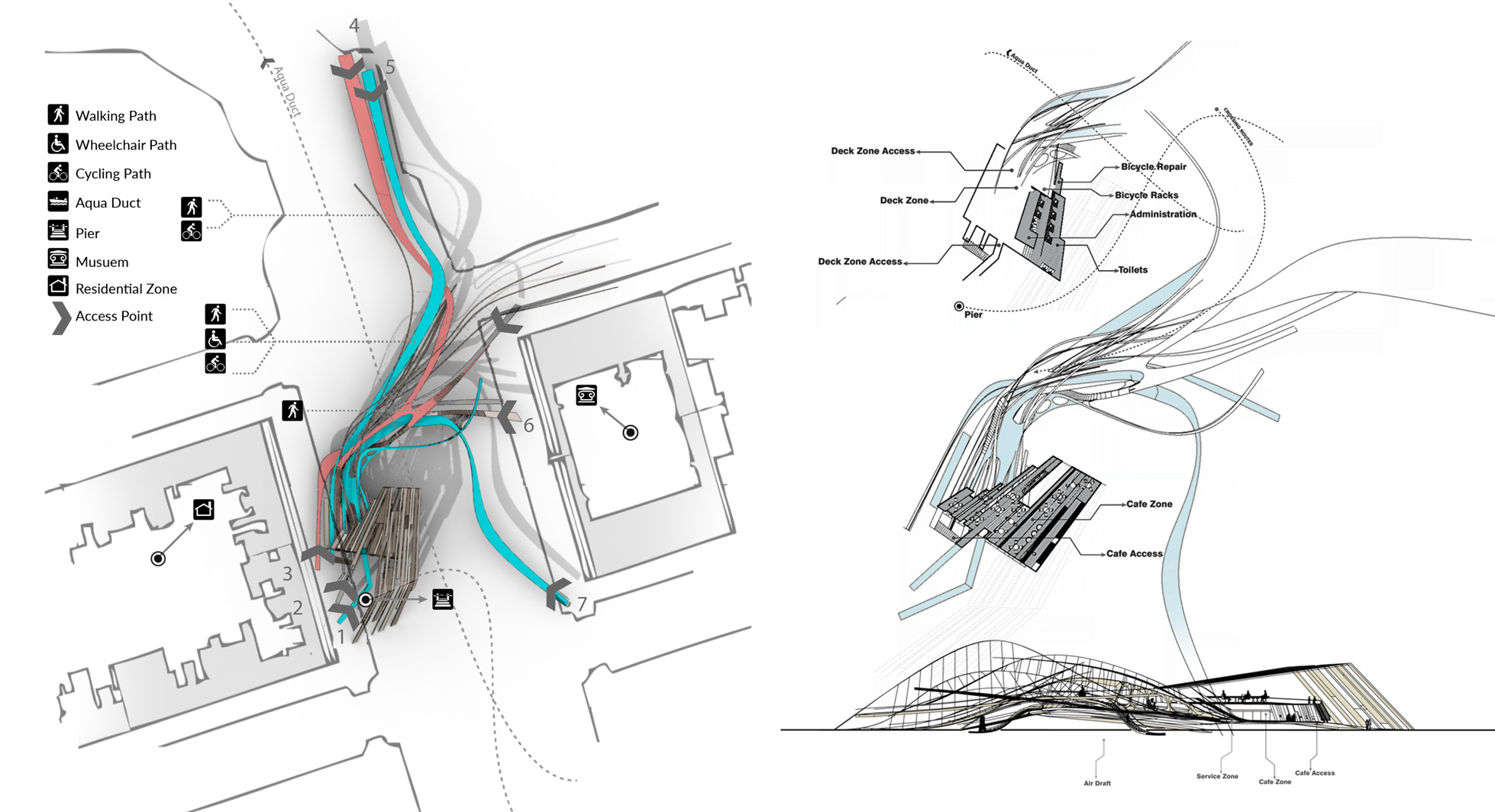
-
Administration:
a 30 m2 space destined for office, changing room, plant room / storage. 30 bicycle racks available anywhere within the new development.
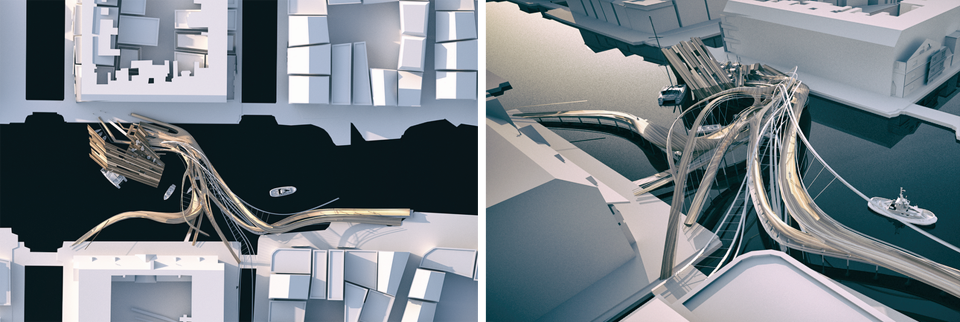
-
Café:
a 100 m2 space where 20 tables for 4 people each will be situated together with a small area for snack food concession. Bicycle Repair : a 50 m2 space with two repair stations including tools desk and bike storage.
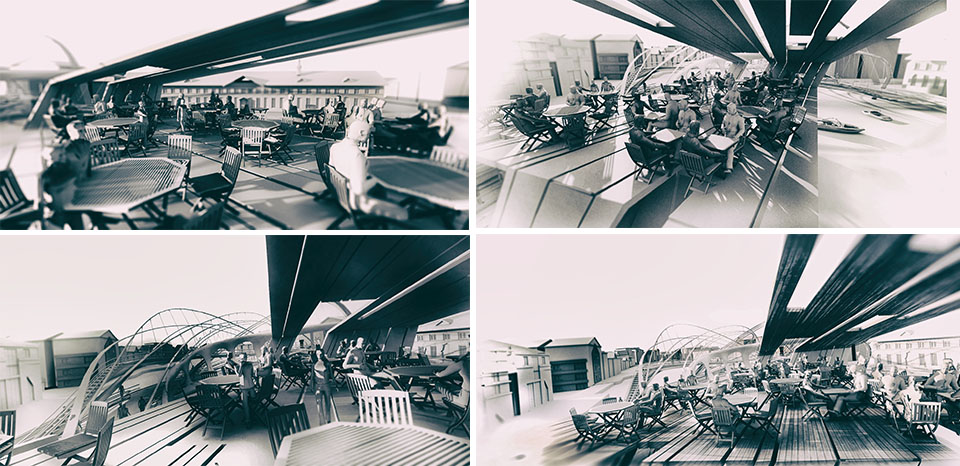
-
Services & Facilities:
a 20m2 space 4 toilet cubicles, (note: toilets will be used by staff and café customers only.)
-
Total Area:
approximately 200 m2 (pedestrian bridge not including
-
DESIGN CRITERIA:
Access: Access must meet the disabled access standards.
Structure: Although no engineering calculation is to be presented, an “architectonic” structural design is to be suggested as a basis or foundation for the building’s final structural criteria. This means that the structure should be clearly represented both in plan and sections. Special organization: Note that you can design the café, bicycle repair area and services on the bridge itself as well as both bank sites. The height and width passage underneath should follow the international convention of river transport.
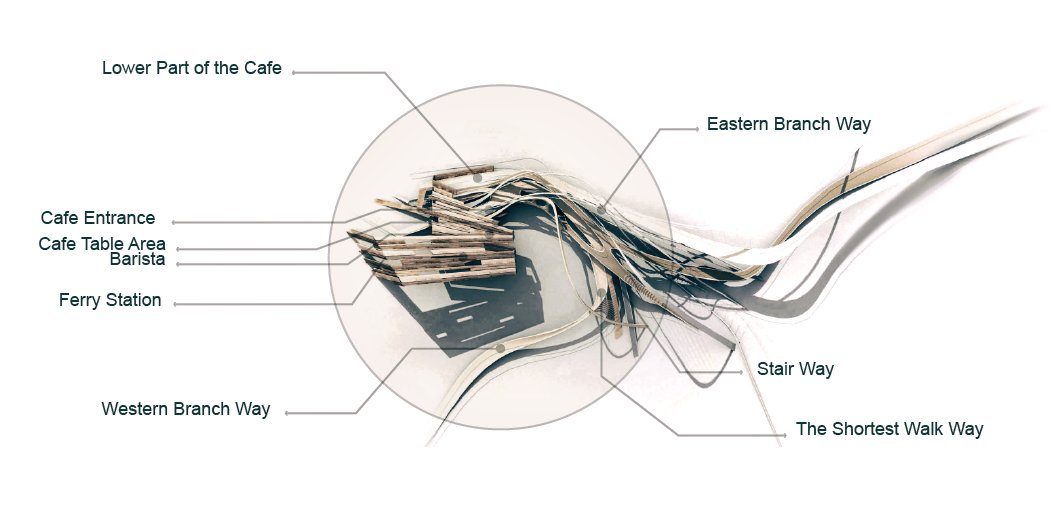
-
Volume:
The volume must relate harmoniously with its context and be unique and original.

-
Materials:
There is no restriction regarding the choice of materials; however, thought should be given to the idea of sustainability.
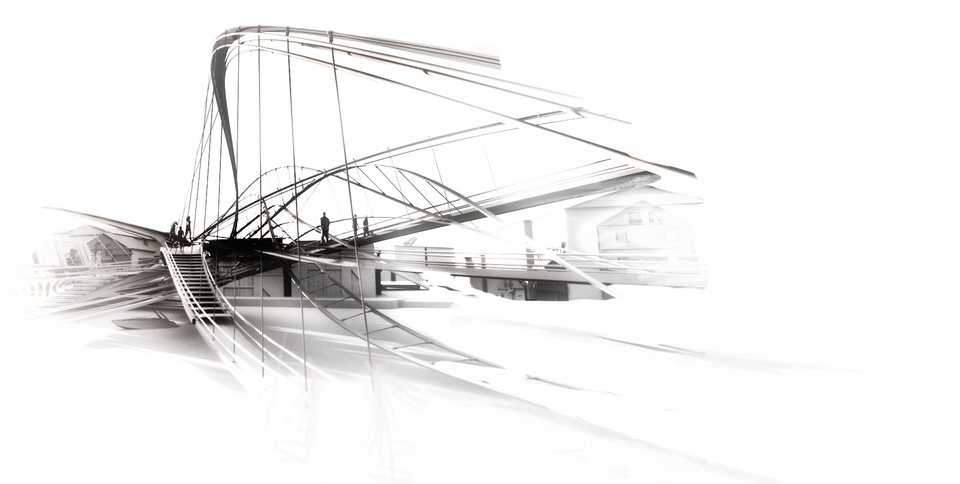
-
Goals
The spiral movement of the woven fabric of the society twists in itself and reflects on itself its past and its present coalesce, then it opens up to the outside; at the turning point, the museum is revealed, and the best view is achieved here by a rotation of roughly 20 degrees.
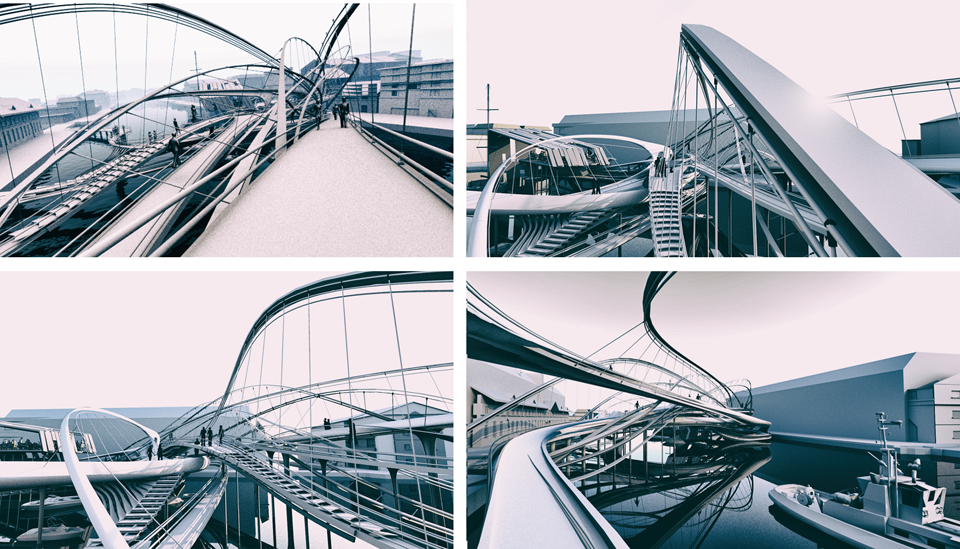
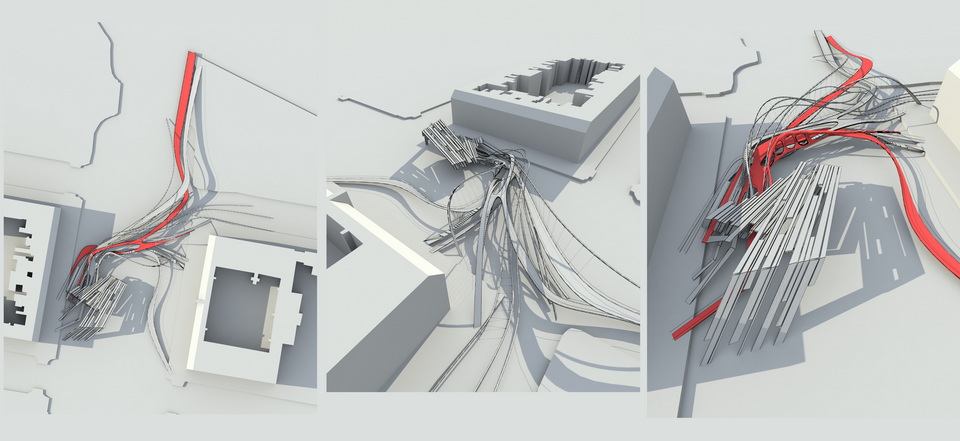
Manifesto & The IDEA
NothingScape : Topology of Uncertainty
- NothingScape provides an interactive and encouraging field of social interaction, but not an empty or negative one. On the contrary, NothingScape pushes the forces of the given situation to a state of uncertainty where the forces are no more able to impose a certain pattern or behavior.
- NothingScape is on the one hand-shredded down by forces like the air draft passage, the attraction of the museum, the charm of the river, and all the passages that accommodate the movements, and is on the other hand constituted up by the various Scapes that provide people with potentials on a scale previously unimaginable. Besides cityscapes, landscape and riverscape, as Arjun Appadurai observes, we have, socioecapes, technoscapes, and so forth.
- Altogether, these Scapes build the fabric of the society, and architecture becomes the prefabrication of that fabric. The architecture assumes the responsibility to foresee such complicated needs and at the same time to provide freedom.
- NothingScape doesn’t imply neglecting or ignoring forces; nothing escapes the design web of interwoven relations, but it is a positive NothingScape, an iconoclastic icon, for none of these singular forces are able to prefigure the space.
- Architecture becomes a full NothingScape through which the collective journey of people occurs.
- No other piece of architecture would better show a NothingScape than a bridge that stands opposed to polarizations and directions, undoing the sides and bridging the gaps.

The spiral movement of the woven fabric of the society twists in itself and reflects on itself its past and its present coalesce, then it opens up to the outside; at the turning point the museum is revealed and the best view is achieved here by a rotation of roughly 20 degrees.
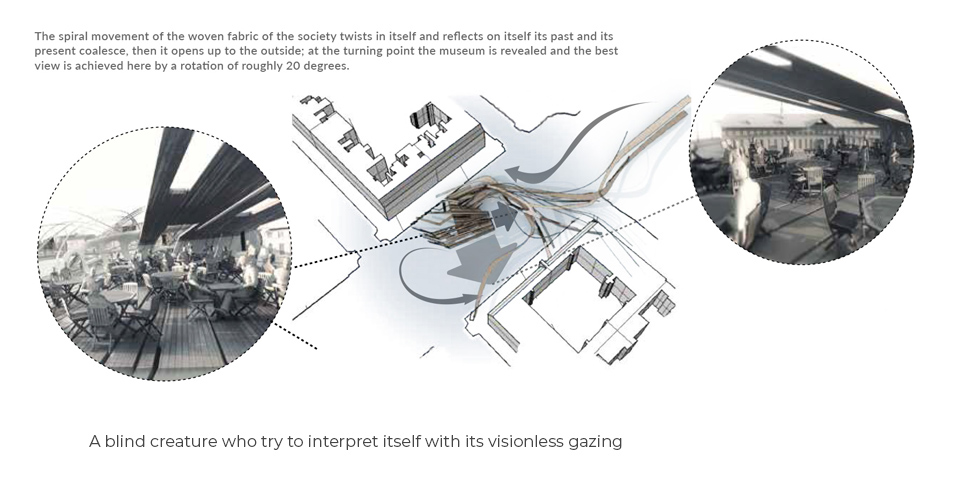
“..here immediate and direct confrontations take place between the past and the future, the inside and the outside, at a distance impossible to determine, independent of any fixed point. The image no longer has space and movement as its primary characteristics but topology and time.” (Deleuze)
